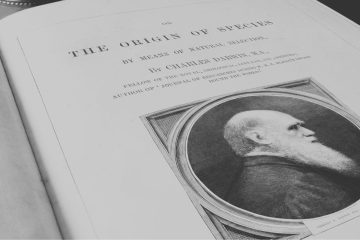What Happened On November 3rd?
On November 3, 1973, NASA launched Mariner 10 from Cape Canaveral, setting out on a mission to explore Venus and Mercury. Mariner 10 became the first spacecraft to target two planets in a single mission. The mission would be remembered not just for its success but also for its innovation in planetary exploration.
Once Mariner 10 entered space, it deployed its solar panels and began transmitting data back to Earth. The spacecraft’s mission used a novel technique known as gravity assist, allowing it to use Venus’ gravity to accelerate and change its trajectory toward Mercury. This was the first time a spacecraft had used gravity assist for interplanetary travel. Engineers planned this precision maneuver with great care, knowing that a slight miscalculation could send Mariner 10 off course, jeopardizing the entire mission.
Mariner 10’s flyby of Venus in February 1974 gave scientists an unprecedented look at the planet. It captured over 4,000 images, which revealed Venus’ thick atmosphere of carbon dioxide, a key factor in the planet’s runaway greenhouse effect. This discovery helped confirm that Venus’ extreme heat, where surface temperatures exceed 460 degrees Celsius, came from its dense atmosphere trapping solar energy. Beyond just the surface data, Mariner 10 detected upper atmosphere wind speeds of up to 360 kilometers per hour, giving new insights into Venus’ violent weather patterns, which had remained poorly understood.
During the Venus flyby, Mariner 10 observed atmospheric lightning, a surprising discovery. Although the planet’s surface appeared stable, the spacecraft recorded electrical discharges in the thick clouds above, hinting at more dynamic atmospheric processes than previously thought. Scientists had long speculated about lightning on Venus, but Mariner 10 offered the first observational evidence of it. Additionally, the spacecraft’s instruments confirmed the presence of solar wind interaction with Venus’ weak magnetic field, another finding that challenged earlier assumptions about the planet’s electromagnetic properties.
After successfully using Venus’ gravity, Mariner 10 changed course and sped toward Mercury. This maneuver saved the spacecraft valuable fuel and increased its speed, ensuring it would reach Mercury as planned. In March 1974, Mariner 10 became the first spacecraft to reach the innermost planet of the solar system. The images it transmitted back showed a surface covered in craters, indicating Mercury had experienced intense bombardment over billions of years. Among these features was the massive Caloris Basin, an enormous impact crater over 1,500 kilometers in diameter. It became clear that Mercury’s ancient surface had been shaped by a history of asteroid collisions.
Mariner 10 made another unexpected discovery during its first flyby of Mercury: the planet had a magnetic field. This finding contradicted earlier theories that Mercury, being small and close to the Sun, would have lost any magnetic activity. Instead, Mariner 10’s measurements suggested that Mercury’s core remained partially molten, and this molten core continued generating a magnetic field. This discovery forced scientists to revise their models of how rocky planets evolve over time, especially those so close to their parent stars.
While studying Mercury, Mariner 10 confirmed that the planet lacked any substantial atmosphere, with only trace amounts of helium and hydrogen, likely deposited by the Sun’s solar wind. Without a protective atmosphere, Mercury’s surface experienced temperature extremes ranging from over 400 degrees Celsius during the day to below -180 degrees Celsius at night. The lack of atmosphere also left the surface exposed to constant meteorite impacts, explaining the abundance of craters.
Despite its successes, Mariner 10 encountered some challenges. Solar radiation near the Sun caused interference with the spacecraft’s attitude control system, leading to moments when it drifted slightly off course. NASA engineers responded by using the spacecraft’s onboard instruments to recalibrate its position, allowing the mission to continue as planned.
During the second flyby of Mercury in September 1974, Mariner 10 gathered even more detailed images of the planet’s surface. Scientists identified towering cliffs, known as scarps, stretching across vast distances. These cliffs indicated that Mercury’s surface had contracted slightly over billions of years as the planet’s interior cooled, causing the crust to buckle. The existence of these scarps added a new dimension to the understanding of Mercury’s geological history, suggesting that it had undergone significant internal changes throughout its lifetime.
Researchers also noted that Mercury’s magnetic field fluctuated as it passed through different parts of its orbit, influenced by the Sun’s proximity. The solar wind had more of an effect on Mercury’s magnetosphere than previously expected, revealing a complex interaction between the planet and solar radiation. This discovery shed new light on the role the Sun plays in shaping the magnetic fields of nearby planets.
By the time Mariner 10 completed its third and final pass by Mercury in March 1975, the spacecraft had exhausted its fuel. However, it continued transmitting data up until the last moment. The final observations revealed evidence of past volcanic activity, with lava flows having filled some of the planet’s craters and basins. The discovery of volcanic activity added yet another layer of complexity to Mercury’s history, indicating that it had once been geologically active, something previously thought unlikely for such a small planet.
One of the less-publicized achievements of Mariner 10 involved its capture of an iconic image showing both Earth and the Moon from space. This photo, while not a scientific objective, became symbolic of humanity’s broader exploration of the cosmos. It offered a unique perspective on our home planet, emphasizing the significance of exploring worlds beyond Earth.
Mariner 10 also set a precedent for future space missions by introducing digital imaging technology. Earlier missions relied on film, but Mariner 10 sent digital images back to Earth in near real-time, allowing scientists to study the data almost instantly. This method revolutionized how future missions would capture and analyze images, making space exploration more efficient and responsive to new discoveries.
NASA’s MESSENGER mission, launched in 2004, returned to Mercury with new technologies, but much of the mission was built on the foundation laid by Mariner 10. MESSENGER built upon Mariner 10’s discoveries, providing further insights into the mysteries first uncovered decades earlier.





